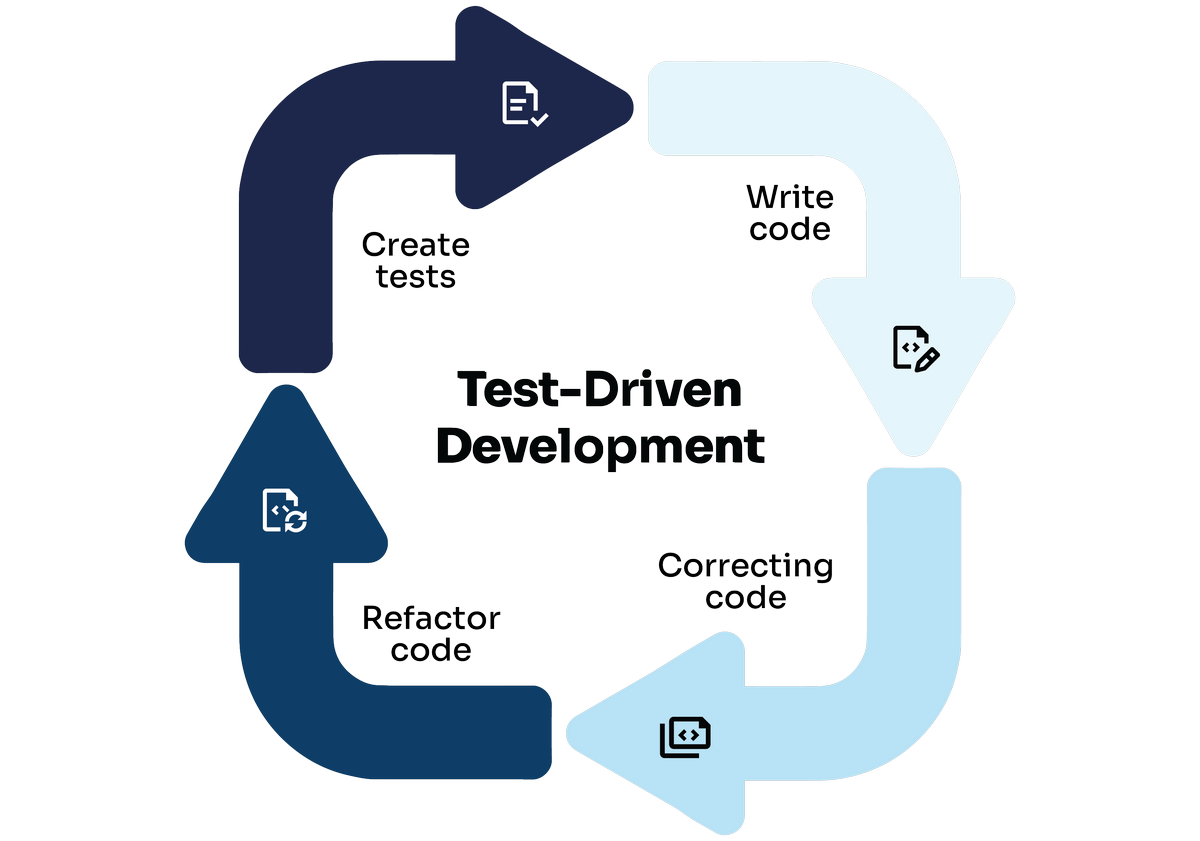Test-driven development (TDD) is a well-established software design practice for developing software, favored by many programmers for decades. When a developer practices TDD, they write the tests before writing the code. It may seem like a long road towards the end product initially, but along the way, TDD comes with surprisingly efficient benefits.

The phases of Test-Driven Development
- Create tests
Developers need to create precise tests to verify the functionality of the features of the end-product. The test, at first, is meant to fail and is written based on the assumption of how the feature needs to behave. - Write code
The developer writes the minimum required code to pass the test which previously failed. The code is simple, not perfect, not finished yet, and must not be beyond the functionality of the feature, the goal is to pass the test. - Correcting code
When the test fails, the developer will make temporary changes that are required to pass the test. After correcting, the test can run successfully when re-executed. - Refactor code
Once the test is executed successfully, the developer will refactor the code. The focus here is to write ‘clean’ code. The code must be as efficient, readable, and maintainable as possible.
The benefits of TDD
- Better understanding
Writing the test before the code has a big advantage for the developer’s understanding. It helps the developer to put themselves in the shoes of their end-users and imagine real-world examples. This will also result in writing less, but more focused code and producing easily-composable and reusable modules. - Time-efficient
Since the tests are already put in place, there is no need for extensive testing anymore to determine if the full code is working properly. With TDD the developer gets feedback in a matter of minutes, on what is newly written. Besides no time being wasted on extensive testing, the developer also doesn’t need to spend time debugging the entire code. In the end, the team has more time to focus on the actual end-product. - Continuous refactoring
One – if not the most – important phase of TDD is refactoring. Refactoring in TDD emphasizes the quality of the code. The developer focuses on removing duplication or potentially optimizing the code, and increasing efficiency without changing the behavior of the end-product.

How does PCG implement Test-Driven Development?
At PCG, we follow the Agile process. Our experience has shown that test-driven development works great with working in an Agile way. It ensures that the team has a complete understanding of the solution, works highly focused on the code, and is in regular contact with the client who is involved from day 1. With Test-Driven Development the team delivers an end-product that is highly stable, maintainable, and efficient.
Elevate Your Project with PCG's Test-Driven Development
At PCG, we harness the efficiency of Test-Driven Development (TDD) within our Agile framework, delivering stable, maintainable, and client-focused solutions. Embracing TDD allows us to create robust, reusable code, saving time and enhancing product quality. Interested in seeing how TDD can revolutionize your project? Contact us now and let's start crafting exceptional solutions tailored to your needs. Let's build something great together.
